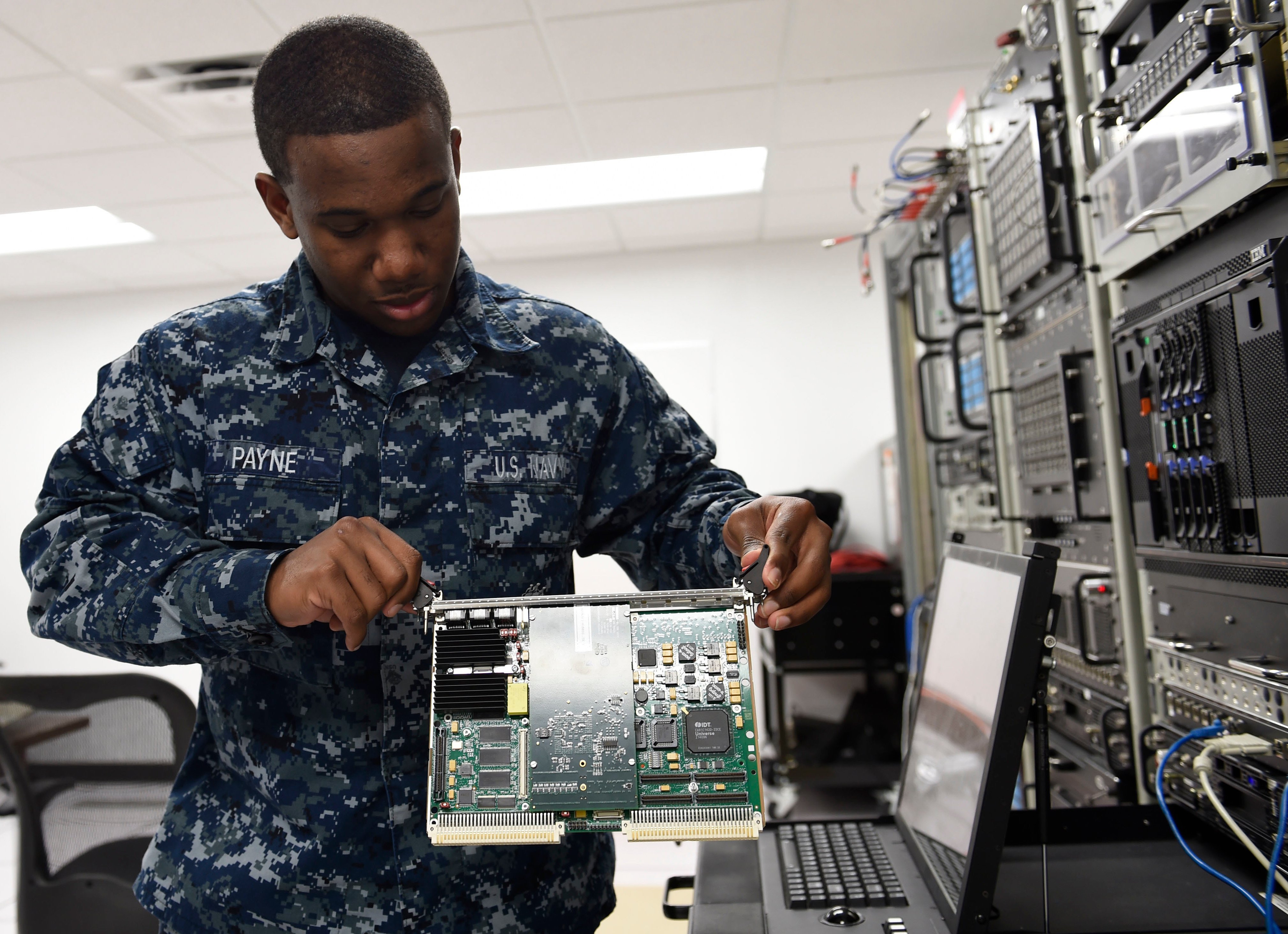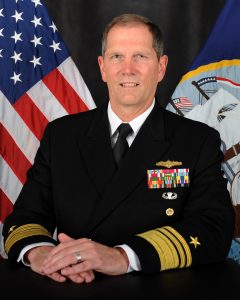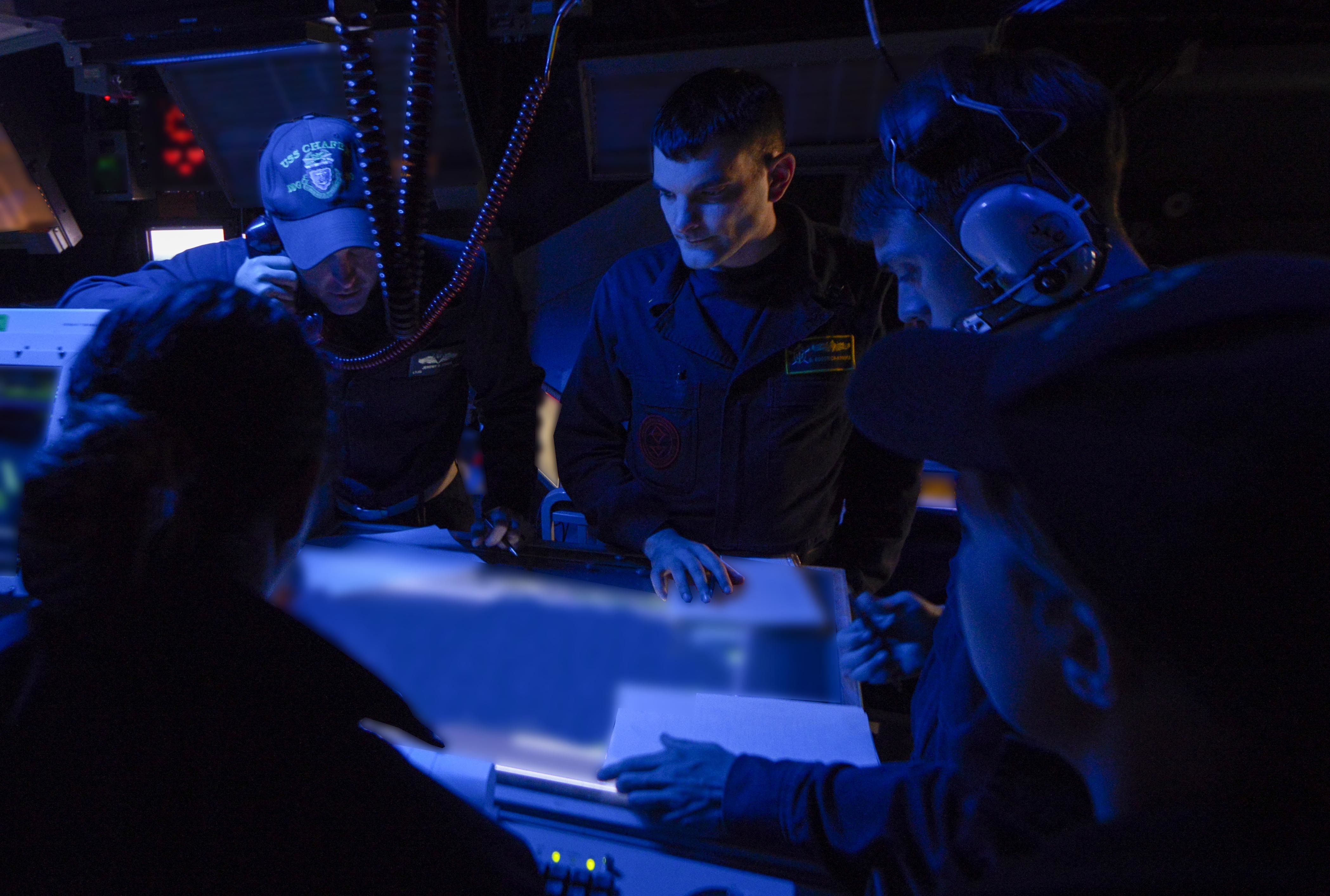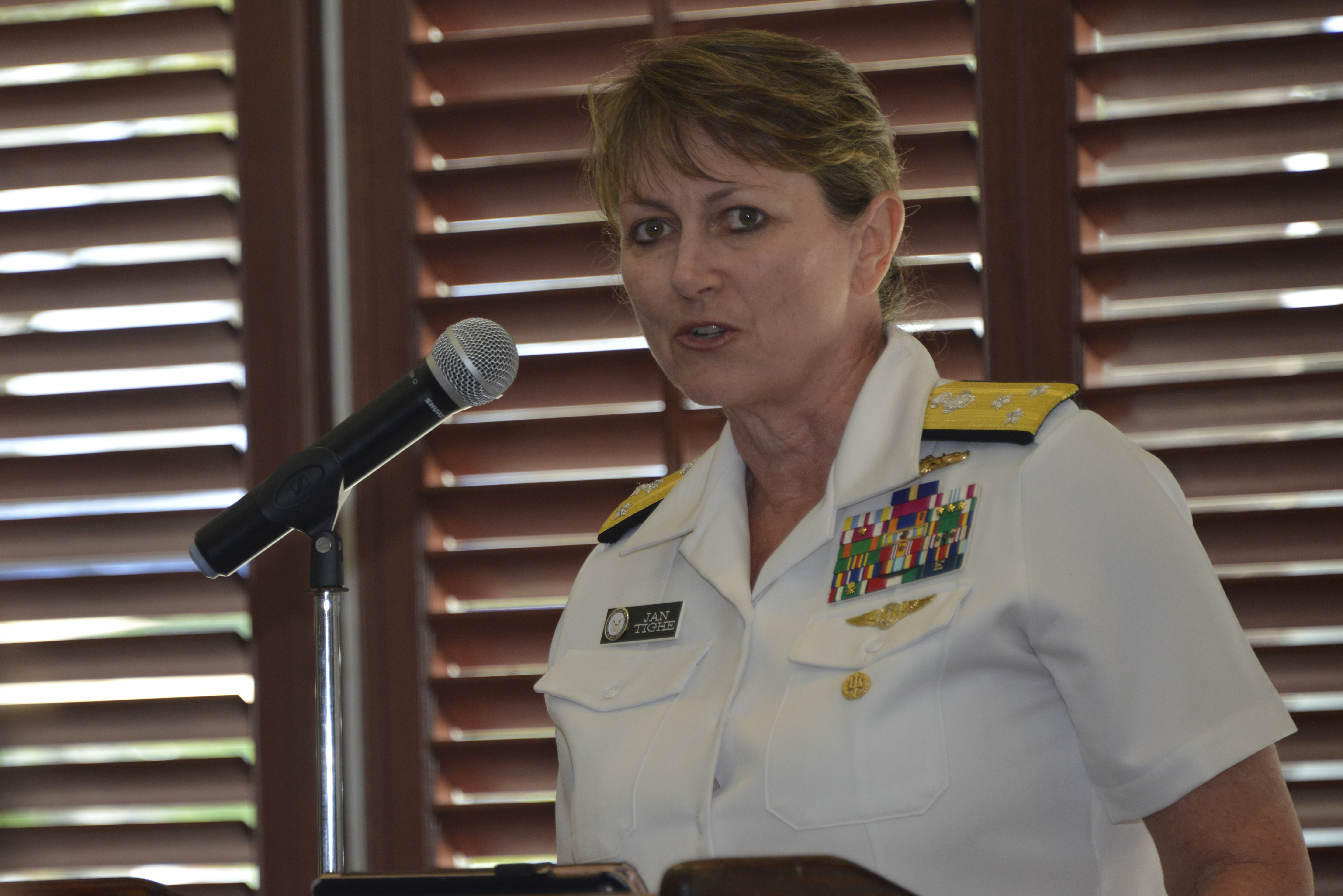
SAN DIEGO, Calif. -– As it moves into its fourth year, the Navy’s force of information warfare professionals continues to expand and evolve into a greater role supporting tactical warfighters, Vice Adm. Matthew Kohler said on Tuesday.
Kohler, who has commanded Naval Information Forces (NAVIFOR) since its establishment in 2014, highlighted three initiatives in the information warfare community to create Warfare Tactics Instructors, establish a training group to oversee unit-level IW training, and formalize a position of “IW commander afloat.”
Those initiatives follow on last year’s creation of the Naval Information Warfighting Development Center, established in March 2017. The goal of NIWDC “is to produce more talented as well as a more agile and a more ready Navy,” he said at the WEST 2018 event cohosted by the U.S. Naval Institute and AFCEA.

The Navy continues to build the center, which Kohler said is only 50-percent manned but has been involved in all major fleet exercise or certification events and remains at the core of information warfare “innovation” both at afloat and operational shore commands.
Kohler said the NIWDC commander, Capt. John Watkins, “has been instrumental in centralizing information warfare advanced training across the community, bringing together efforts to update and develop new information warfare tactics techniques and procedures and getting them out to the fleet and to serve as a catalyst for maturing the information warfare training continuum.” He added that he expects NIWDC will be led by a flag officer by year’s end.
The center has been partnering with other WDCs. In fact, Watkins said, NIWDC will be working with the Naval Surface and Mine Warfighting Development Center (SMWDC) and its Surface Warfare Advanced Tactical Training (SWATT) through the in-port phase and two underway at-sea training periods with amphibious assault ship USS Essex (LHD-2), based in San Diego.
With NIWDC stood up and operating, the next focus for NAVIFOR and NIWDC leadership is establishing an Information Warfare Tactics Instructor program. The first baseline WTI course already is underway, Kohler said.

“These will be the TOPGUN, patch-wearing experts equivalent,” Kohler said. Information warfare WTIs – pronounced “Witties” – will come from intelligence, cryptologic warfare, information warfare, meteorology and space.
“Our WTIs will be officers; they can also be enlisted, and I envision also they will be civilians,” he said. The “baseline” course, 18-1, kicked off last week with 20 candidates, all officers, “so we are off to the races.”
A second baseline course, 18-2 will start in July, and a third class might follow before the end of the year, Watkins said.
“I’m looking forward to our first enlisted weapons Tactics Instructor. I absolutely see the skills our enlisted sailors bring to qualify as WTIs,” Kohler said, telling USNI later that he’d “like to see” some enlisted personnel in the next class.
NAVIFOR also is moving close to establishing an Information Warfare Training Group, which will be focused on “unit basic- and intermediate-level training for information warfare,” Kohler said. The effort will parallel the Navy’s Afloat Training Group and will realign IW training focus under the new IWTG.
It will be established “in the next few weeks,” Kohler said, with the final decision awaiting signature at the Director of Navy Staff level. Capt. Chris Slattery, currently commander of Navy Information Operations Command Norfolk, already is tapped to be the first commander.
“This IWTG will fill a critical gap for us on very granular but highly needed skills for afloat units as well as our shore commands,” Kohler said.
The Information Warfare training function, which often has been managed by the NIOCs in Norfolk, Va., and San Diego, “just wasn’t aligned properly,” Kohler later told USNI.
“Once we have that structure, I can now work closely with the TYCOMs” and ensure focused IW training for sailors on ships such as destroyers and others.
“We saw gaps, and we need to focus on that basic training,” he added.
NAVIFOR also is on the cusp of establishing the Information Warfare Commander Afloat as a formal composite warfare commander at the tactical level.
The move “will put the IW commander in a better position,” Kohler said, compared with previous ad hoc attempts by carrier strike groups to assign someone as the CWC that, “in some cases, weren’t filled by an IW professional.”
“Those days are long past,” Kohler added, noting IW professionals now are assigned to CSG staffs and most are “responsible for all of the information warfare employed in the strike group.” The second IW command screening board met last year, he said, providing screened officers to be trained and assigned into those positions.

Vice Adm. Jan Tighe, deputy chief of naval operations for information warfare and director of naval intelligence, said in a different panel at the conference that the carrier strike group information warfare commander will be a post-major command captain from various information warfare areas: intelligence, information personnel, cryptology or oceanography.
These CSG IW commanders will “bring together the information warfare part of the fight in the strike group. As additional capabilities come in, that fight will be harder and more complex.”
The CSG IW commanders will go through a 100-day training course to ensure the officers from multiple specialties are cross-trained and ready to help strike group leadership handle the full range of electromagnetic maneuver warfare and cyber warfare operations they may face.





